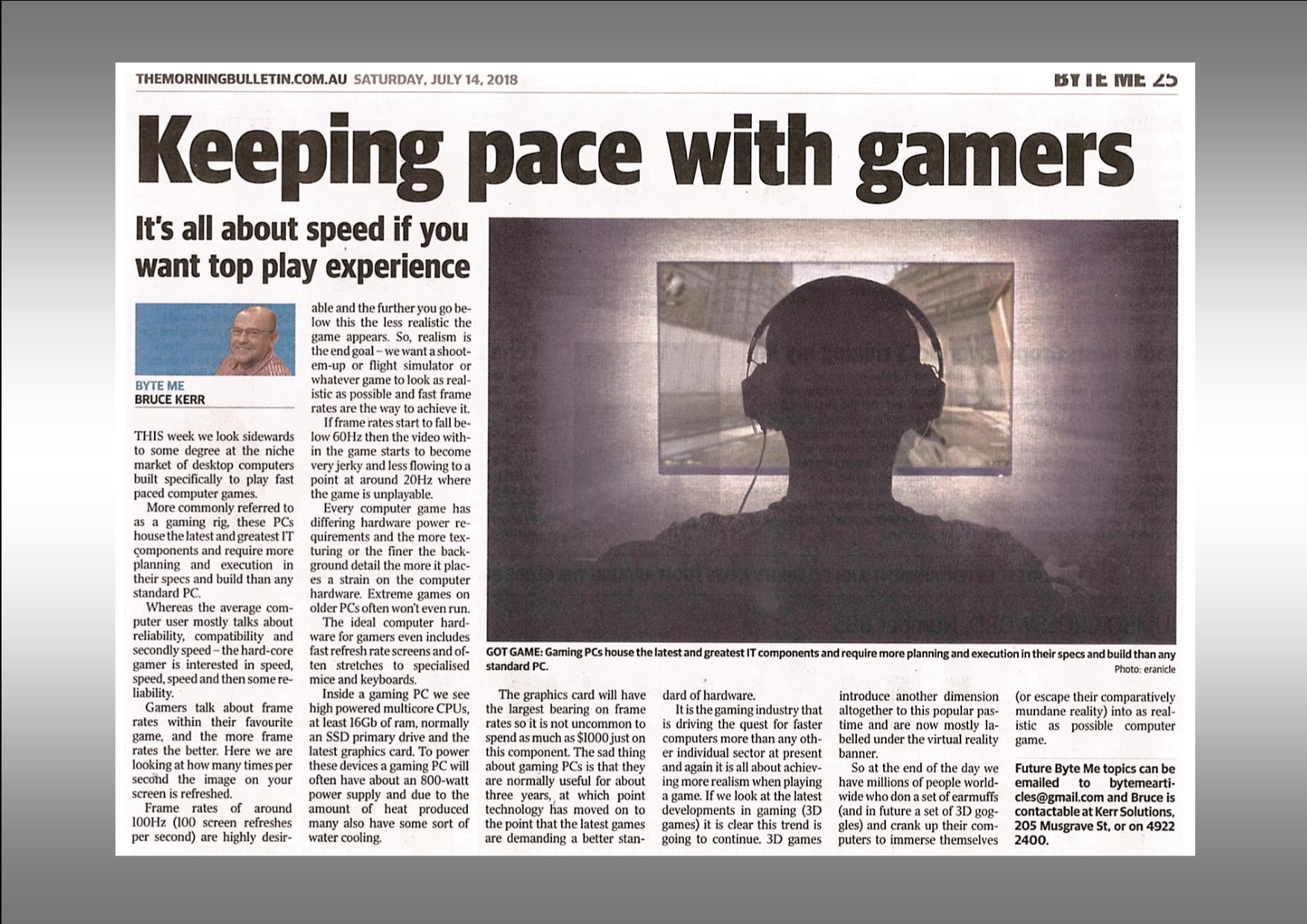14th July 2018
Keeping Pace With Gamers
This week we look sidewards to some degree at the niche market of desktop computers built specifically to play fast paced computer games. More commonly referred to as a gaming rig these PC’s house the latest and greatest IT components and require more planning and execution in their specs and build than any standard PC.
Whereas the average computer user mostly talks about reliability, compatibility and secondly speed – the hard-core gamer in interested in speed, speed, speed and then some reliability. Gamers talk about frame rates within their favourite game, and the more frame rates the better. Here we are looking at how many times per second the image on your screen is refreshed.
Frame rates of around 100Hz (100 screen refreshes per second) are highly desirable and the further that you go below this the less realistic the game appears. So, realism is the end goal – we want a shoot-em-up or flight simulator or whatever game to look as realistic as possible and fast frame rates are the way to achieve this.

If frame rates start to fall below 60Hz then the video within the game starts to become very jerky and less flowing to a point at around 20Hz where the game is unplayable. Every computer game has differing hardware power requirements and the more texturing or the finer the background detail the more it places a strain on the computer hardware. Extreme games on older PC’s often won’t even run.
The ideal computer hardware for gamers even includes fast refresh rate screens and often stretches to specialised mice and keyboards. Inside a gaming PC we see high powered multicore CPU’s, at least 16Gb of ram, normally a SSD primary drive and the latest graphics card. To power these devices a gaming PC will often have around an 800Watt power supply and due to the amount of heat produced many also have some sort of water cooling.
The graphics card will have the largest bearing on frame rates so it is not uncommon to spend as much as $1000 just on this component. The sad thing about gaming PC’s is that they are normally useful for around 3 years at which point technology has moved on to the point that the latest games are demanding a better standard of hardware.
It is the gaming industry that is driving the quest for faster computers more than any other individual sector at present and again it is all about achieving more realism when playing a game. If we look at the latest developments in gaming (3D games) it is clear this trend is going to continue. 3D games introduce another dimension altogether to this popular past time and are now mostly labelled under the virtual reality (VR) banner.
So, at the end of the day we have millions of people worldwide that don a set of earmuffs (and in future a set of 3D goggles) and crank up their computers to immerse themselves (or escape their comparatively mundane reality) into as realistic as possible computer game.
Future Byte Me topics can be emailed to [email protected] and Bruce is contactable at Kerr Solutions, 205 Musgrave Street or on 49 222 400.
For more advice and assistance from Kerr Solutions, like and follow us on Facebook
